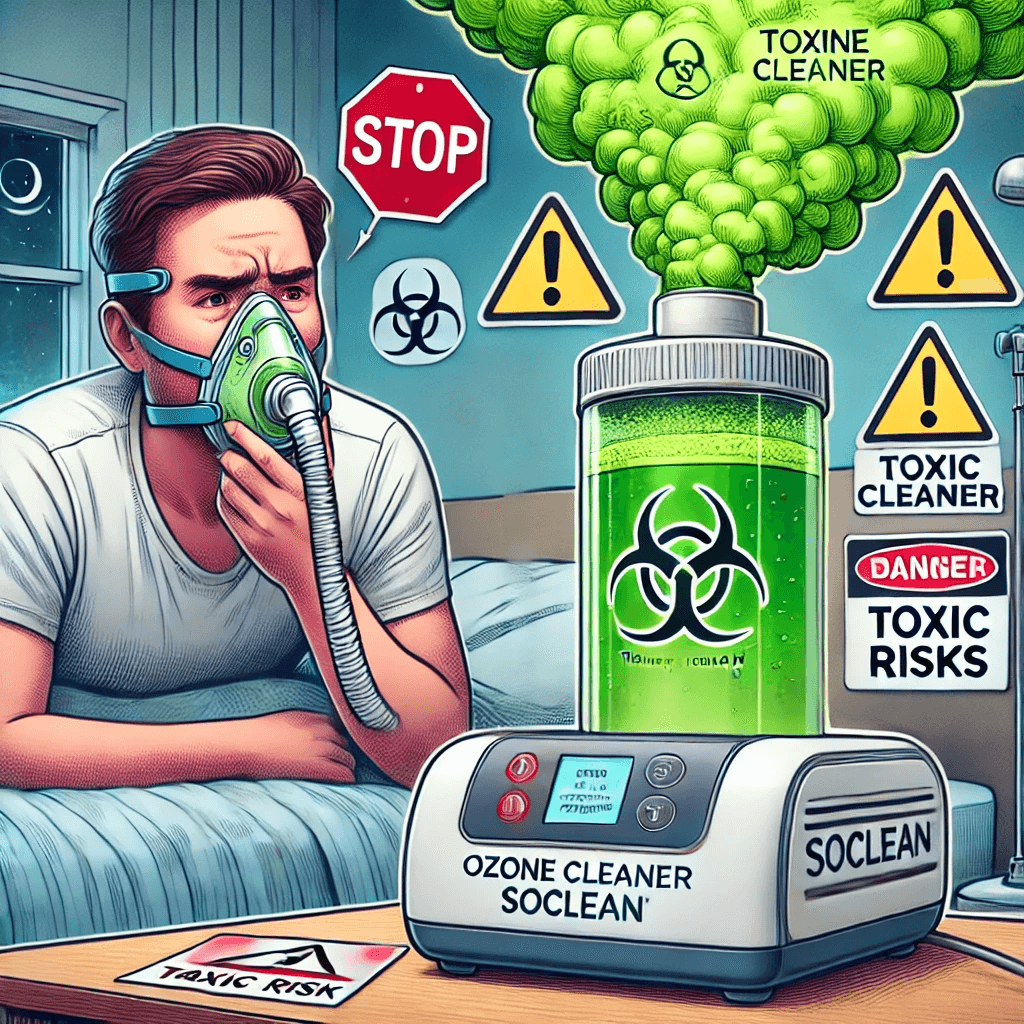FDA’s Warning on SoClean and Ozone CPAP Cleaning Devices
If you’re a CPAP user, you’ve likely heard of devices like SoClean that promise to sanitize CPAP equipment using ozone gas. However, the FDA has issued warnings about the potential risks of ozone-based CPAP cleaners. These devices, including SoClean2 and SoClean3, are not authorized for cleaning CPAP machines and accessories. Instead, they should only be used as a supplement to proper washing, not as a replacement.
This article explores what the FDA has said about ozone devices, the risks associated with them, and why proper cleaning remains the safest and most effective method. Plus, we’ll introduce the CSpring RediClean, the best alternative for CPAP users looking for a safe and comprehensive cleaning solution.
Why the FDA Warns Against SoClean and Ozone Devices
In November 2023, the FDA issued a safety communication regarding ozone-based CPAP cleaners, including the SoClean2 and SoClean3, which were part of a voluntary recall. The recall included updates to user manuals and new adapters to minimize ozone exposure and prevent damage to CPAP equipment.
The FDA emphasized that these devices do not actually “clean” CPAP gear. While ozone gas can kill bacteria and viruses, it does not remove physical debris such as oils, dust, and mineral buildup. This debris can accumulate over time, leading to odors, bacteria growth, and reduced effectiveness of your CPAP equipment.
The Dangers of Ozone Exposure
One of the FDA’s primary concerns about SoClean and similar devices is ozone exposure. Ozone, also known as “activated oxygen,” is classified as a toxic gas by the FDA and the Environmental Protection Agency (EPA). Inhaling even trace amounts of ozone can:
• Irritate the lungs.
• Worsen conditions like asthma and COPD.
• Increase the risk of respiratory infections.
Even when used properly, ozone can linger in CPAP equipment and be inhaled during therapy. For CPAP users—many of whom already have respiratory issues—this is particularly concerning. The FDA advises users to avoid relying solely on ozone-based cleaners and instead focus on proper washing techniques.
The Best Way to Clean CPAP Equipment
The safest and most effective way to clean CPAP gear is through regular washing with soap and water. Unlike ozone devices, washing physically removes the oils, dust, and other debris that can harbor bacteria and reduce the performance of your equipment.
How to Properly Clean CPAP Gear:
1. Daily: Rinse the mask cushion to remove oils from skin contact.
2. Weekly:
• Wash the tubing, mask, and water chamber with warm, soapy water.
• Rinse thoroughly to prevent soap residue.
• Air dry all components completely to avoid mold growth.
3. Monthly: Replace disposable filters and inspect for wear and tear.
Proper cleaning keeps your CPAP equipment functioning optimally and reduces the risk of respiratory infections caused by unclean gear.
Washing is The Best Alternative to SoClean.
If you don’t want to deal with the hassle of hand washing all your CPAP equipment, and If you’re looking for an all-in-one solution, the CSpring RediClean is the ultimate CPAP cleaning system. Unlike ozone-based devices, the RediClean is designed to thoroughly wash, sanitize, sterilize, and dry CPAP equipment—eliminating the need for multiple cleaning steps.
Why Choose CSpring RediClean?
1. Washing: RediClean removes physical debris, oils, and buildup that other devices miss.
2. Sanitizing & Sterilizing: It uses safe, non-toxic food-grade citric acid to eliminate 99.9% of bacteria and viruses.
3. Drying: Integrated drying ensures all components are moisture-free and ready for use.
4. Safe: Unlike ozone devices, the RediClean poses no risk of toxic exposure or material degradation.
The RediClean provides a thorough clean while extending the life of your CPAP accessories, making it the safest and most effective cleaning device on the market.
Why Proper CPAP Cleaning Matters
Clean CPAP equipment is essential for effective sleep apnea therapy. Improperly maintained gear can lead to:
• Respiratory infections caused by bacteria or mold.
• Unpleasant odors from built-up oils and debris.
• Reduced performance of masks, tubing, and humidifier chambers.
Ozone-based devices like SoClean may sanitize, but they do not address the physical cleaning necessary to maintain hygiene and functionality.
Choose Safety and Effectiveness with CSpring RediClean. The FDA’s warnings about ozone CPAP cleaning devices highlight the importance of prioritizing safety and proper maintenance. While SoClean and similar devices may appear convenient, they come with risks of ozone exposure and do not remove physical debris from CPAP components.
Regular washing with soap and water remains the best way to keep CPAP equipment clean. For those seeking a more convenient, all-in-one solution, the CSpring RediClean is the ultimate choice. With its ability to wash, sanitize, sterilize, and dry, it outperforms ozone devices while keeping your CPAP therapy safe and effective.








Leave a comment: